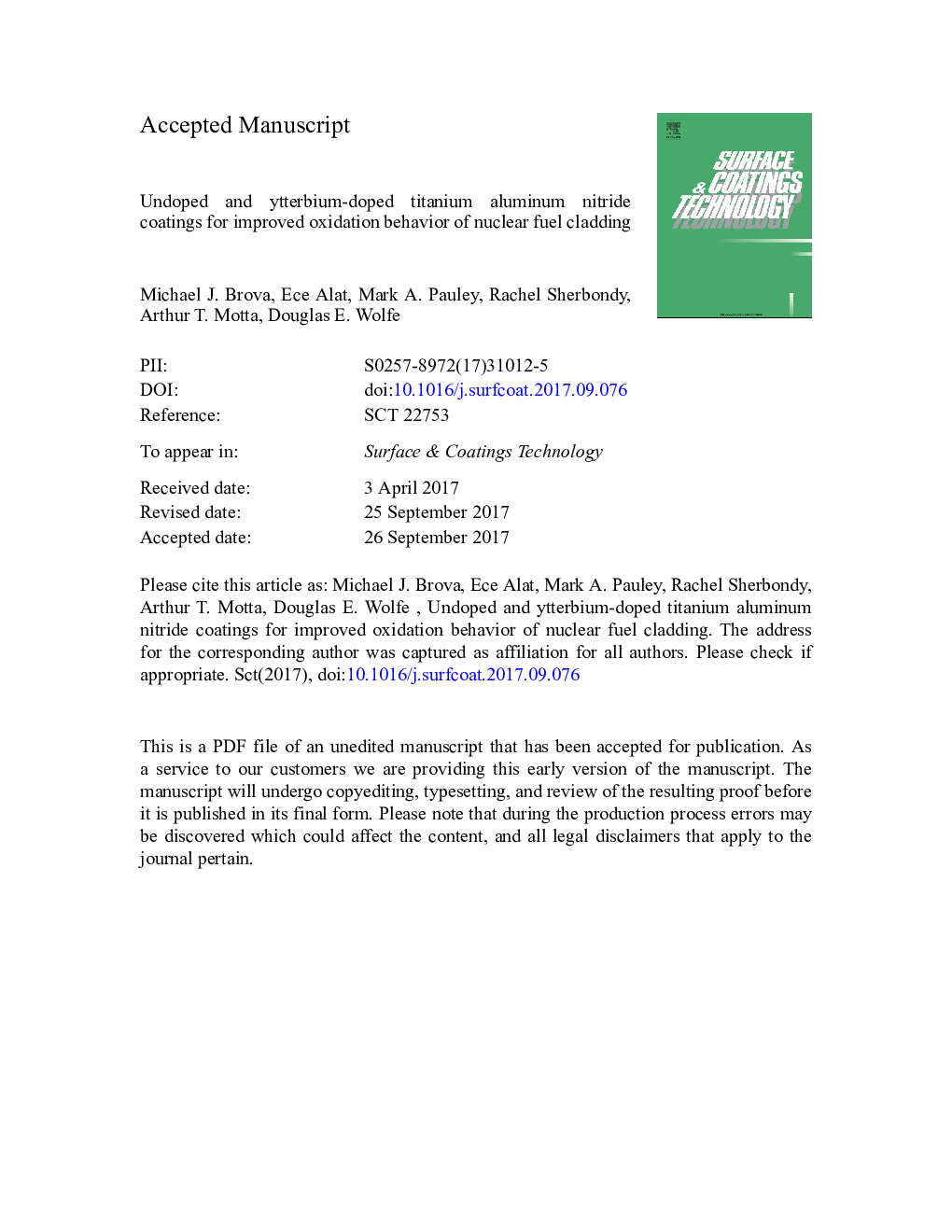| Article ID | Journal | Published Year | Pages | File Type |
|---|---|---|---|---|
| 8024751 | Surface and Coatings Technology | 2017 | 33 Pages |
Abstract
In an effort to develop coatings to increase the oxidation resistance of nuclear fuel cladding during a loss-of-coolant-accident (LOCA), undoped and ytterbium-doped titanium aluminum nitride (TixAl1-xN) coatings were deposited onto ZIRLO® and grade-5 titanium substrates using a hybrid coating technique incorporating both resistance evaporation and cathodic arc physical vapor deposition (CA-PVD). The coating systems consisted of a titanium bond layer, an undoped TiAlN layer, and an outer TiAlN layer doped with varying levels of ytterbium (0.44 to 33.24 at.%). The coated materials were subjected to high temperature atmospheric oxidation testing and differential scanning calorimetry (DSC) to evaluate the effect of different Yb dopant concentrations on the TixAl1-xN coating oxidation resistance. The results showed that the coatings evaluated in this study protected the tubular ZIRLO® cladding material from oxidation when exposed to air at temperatures up to 1200 °C. DSC data showed that the corrosion resistance of coatings with Yb dopant concentrations of 0.44 and 0.64 at.% was better than that of undoped TixAl1-xN coatings and of TixAl1-xN coatings with Yb concentrations â¥Â 4.78 at.%. Yb doping and the 0.44 and 0.64 at.% level also resulted in a lower rate of oxide scale growth and improved scale adherence, which further slowed oxidation kinetics. Peak oxidation resistance was observed in the TiAlN coating with a 0.44 at.% ytterbium dopant concentration. Ytterbium concentrations of 4.78 at.% and greater led to accelerated oxidation rates for the testing conditions studied compared to undoped TiAlN. These results show that ytterbium doped coatings are possible candidates for high temperature resistance of accident tolerant fuel coatings.
Keywords
Related Topics
Physical Sciences and Engineering
Materials Science
Nanotechnology
Authors
Michael J. Brova, Ece Alat, Mark A. Pauley, Rachel Sherbondy, Arthur T. Motta, Douglas E. Wolfe,
